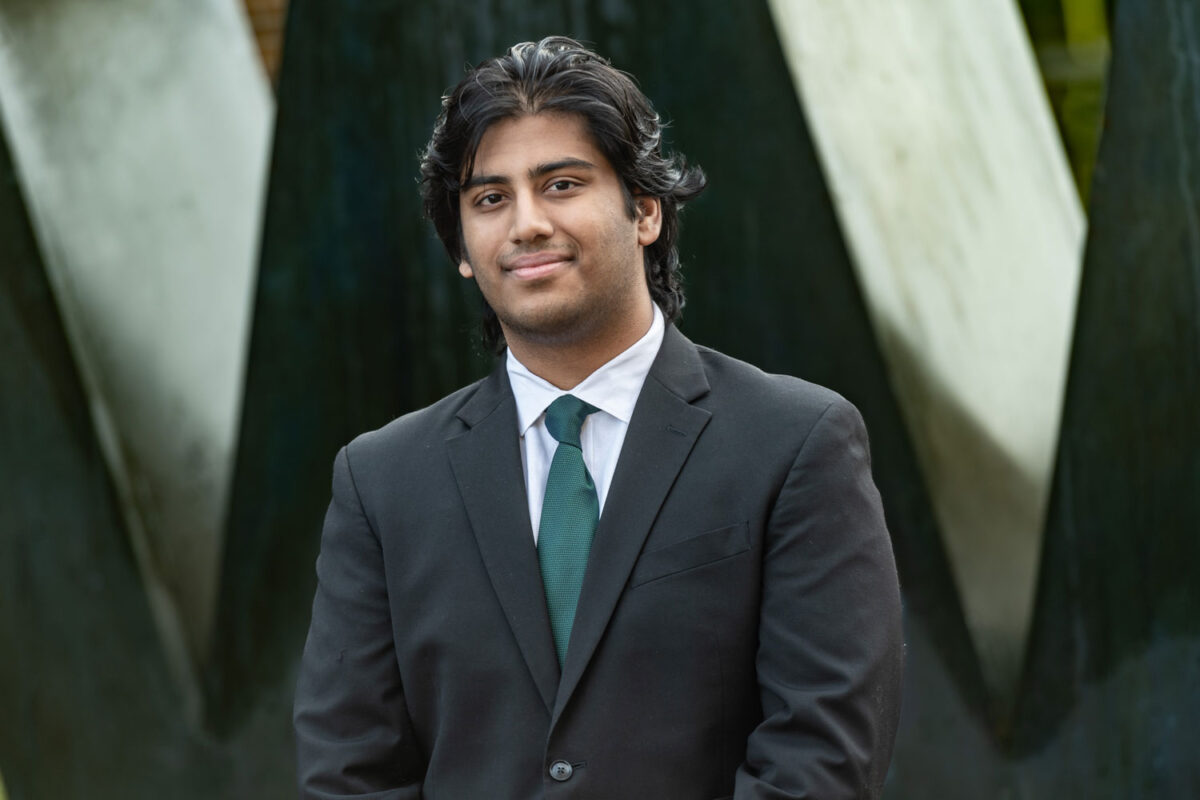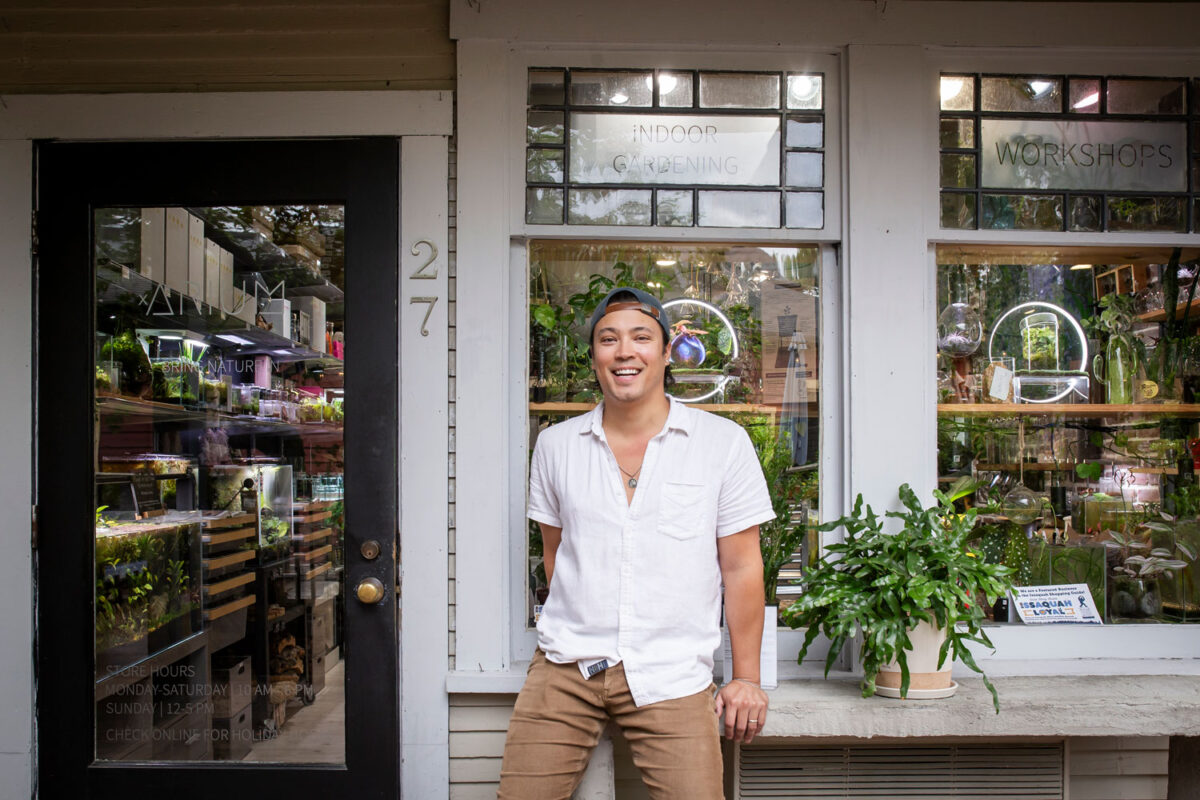Since 2021, two University of Washington Bothell faculty in the School of Interdisciplinary Arts & Sciences have been working to empower and teach community members in Seattle’s Central District to collect and activate local Black histories.
In collaboration with Wa Na Wari, a local center for Black art and belonging, Jill Freidberg, lecturer in Media & Communication Studies, and Dr. Christian Anderson, associate professor with a background in geography and ethnography, established the Seattle Black Spatial Histories Institute.
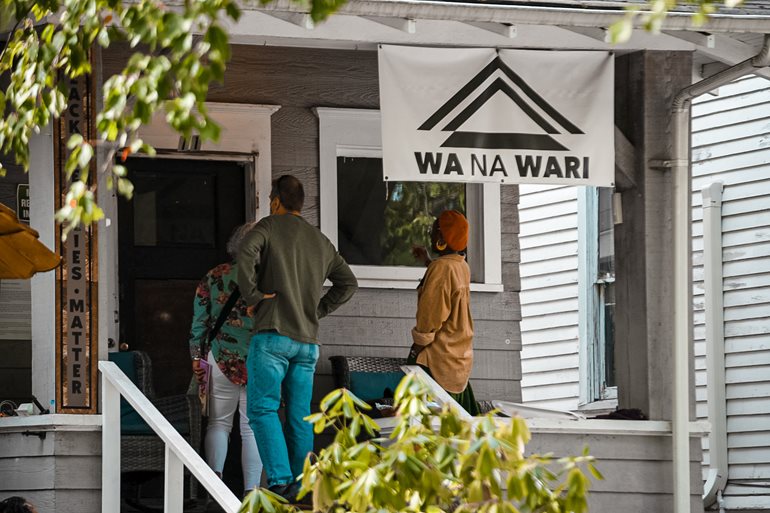
The goal is to train community members in oral history practices that preserve the Black cultural heritage of the area.
The institute is conducted in partnership with the Black Heritage Society of Washington State and Seattle Public Library, with support from 4Culture. Their work also has been supported by a grant from the UW Bothell’s Office of Connected Learning.
Combatting erasure
Freidberg, who is a co-founder of Wa Na Wari in 2019 along with Inye Wokoma, Elisheba Johnson and Rachel Kessler, has lived in the Central District for 17 years — and has seen firsthand the rapid gentrification and the displacement of the BIPOC community that accompanies it.
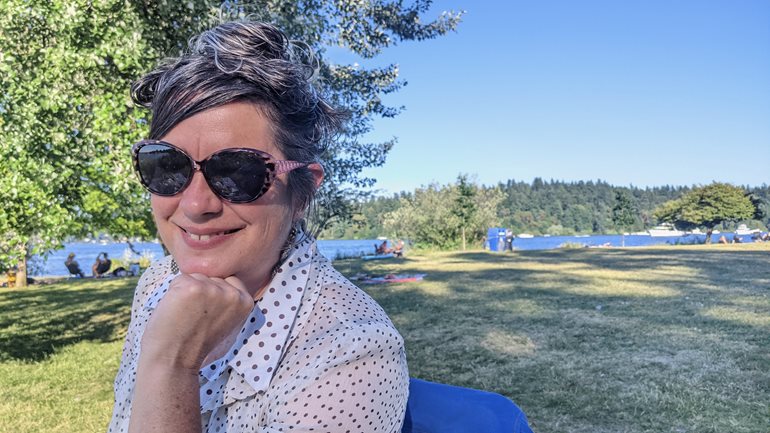
“When developers closed the Red Apple grocery store at 23rd and Jackson Street, I, as a white person in the Central District, was hearing, ‘Thank God such and such is coming to the neighborhood,’ and ‘We’re making it better,’” said Freidberg. “That just doesn’t jive at all with what I understood about this neighborhood, and so it felt like an important step as a white person living in a gentrifying, historically redlined neighborhood with nonfiction media production skills to find ways to interrupt those narratives of erasure.”
In this vein, Freidberg has frequently linked up with other community members, including those who would become her co-founders at Wa Na Wari, to brainstorm and collaborate on projects that could help to prevent and interrupt the erasure that occurs as a result of gentrification.
One such early initiative was the Shelf Life Community Story Project, an oral history project inspired specifically by the loss of the Red Apple, which was bulldozed by real estate developers in 2017. The grocery store had served as an important community hub and was one of the only full-service grocery stores in the area. Its destruction made the Central District even more of a food desert than it already was.
Creating new narratives
The Community Story project, which began four years before Wa Na Wari was formed, relied solely on a limited number of folks such as Freidberg, with expertise in oral history archiving, to record the oral histories of the people in the vicinity of the Red Apple. Quickly, though, Freidberg realized that they didn’t have capacity to keep up with all the stories that needed to be collected and began to consider new ways to preserve cultural history in the Central District.
“We decided it would make much more sense to build community capacity to do this work so there would be more people from the community who could do Black memory work and oral history,” said Freidberg.
In 2019, a house that had been in the family of Inye Wokoma since the 1940s was in danger of being lost to development. So Wokoma, Freidberg, Johnson and Kessler decided to turn the home into a more formal community hub for them to conduct projects such as the Community Story project — and Wa Na Wari, meaning “Our Home” in Kalabari, was born. The Seattle Black Spatial Histories Institute, one of several projects currently run out of the house-turned-community center, launched in summer 2021.
The institute soon acquired regional partners that needed to fill gaps in their historical records, including the Black Heritage Society of Washington State, Friends of Waterfront Seattle, Seattle Public Library and UW Special Collections. The needs expressed by these collaborators helped inform the three themes of the first cohort’s archiving work: Black barbers and beauticians, Black educators and Black experiences on the Seattle waterfront.
Activating oral histories
The cohort, which is finishing its second year, was made up entirely of Black community members ranging from 25 to 65 years old. Potential members underwent an application process so that Wa Na Wari could ensure the candidates would be able to take on the time commitment of the two-year program.
In their first year, participants met weekly on Zoom with Black oral historians from all over the country and collected oral histories in the theme area they selected. They also learned how to determine whom to interview, how to track down narrators and how to craft the kind of conversations to have with their narrators. They were taught about the ethics involved with this sort of archiving as well.
“Oral history is an approach to interviewing that prioritizes the person who’s sharing their story so they’re not called an interviewee, they’re called a narrator,” said Freidberg. “Not only their story but also their control over their story is prioritized, whereas with journalism or documentary filmmaking, the interviewee is agreeing to answer questions, and then when done the journalist or filmmaker may do whatever they want with it.
“Oral history archivists understand that stories belong to the people who experienced them and shared them.”
Respecting the narrator
With this in mind, the cohort of community members learned important interview techniques that help to preserve trust with and respect for the narrator, to decrease the chances of causing harm to an individual and the community.
“Misusing someone’s story or failing to follow up, or anything that could make a person feel like ‘Oh, I just shared a bunch of stuff, and then I don’t know where it ended up’ — that can feel really exploitative,” said Freidberg.
Ariel Paine, a member of the first cohort, said one of the most useful things he learned in the program was how to use technology in relation to this sensitive work. “Technology is so helpful with archiving and access to materials now,” he said. “People left us a blueprint, and we have to learn how to access it and use it.”
The second year of the program is dedicated to proposing and developing public activation, or publicly facing projects that share the stories they recorded. The cohort’s projects, which include an oral history quilt, zine and even dance choreography, will be showcased at Wa Na Wari in fall 2023. The institute is now recruiting for its second cohort, which will run 2023-25.
Grounding in place
Throughout the program, Anderson’s role has been to help ground the participants’ work in geography and spatiality — in line with the “spatial histories” part of the institute’s name.
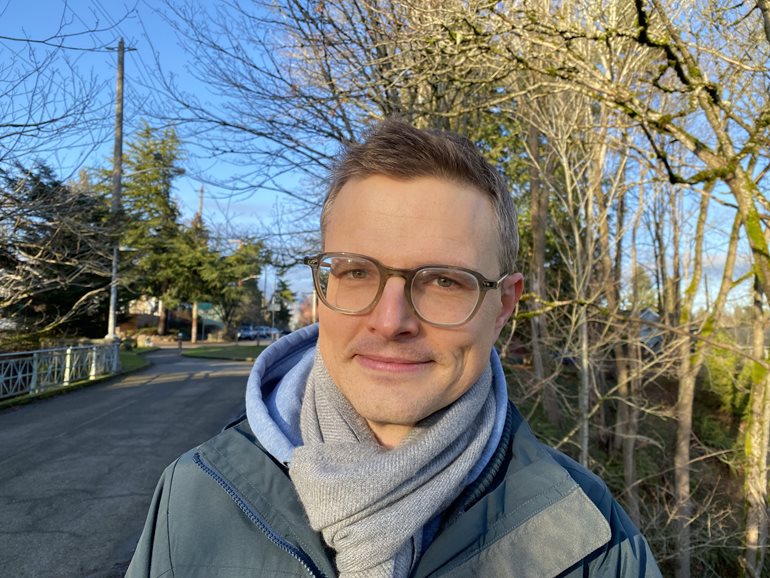
“It’s not just about preservation and thinking about the past,” Anderson said. “It’s also about changing conversations about the kinds of spatial memories that people have in the present.
“So, in addition to documenting and having conversations about the resilient communities that have been and continue to be in these spaces, it’s a conversation about the way that we talk about what could happen, how communities could be built.”
In other words, the stories we tell about place have bearing on the kinds of urban spaces that are built and for whose interests. Anderson, who was invited to get involved by Freidberg, is collaborating with Wa Na Wari to help support the participants’ understanding of that relationship.
Bolstering connections
As they support Wa Na Wari in its mission to help the Central District community archive its unique cultural history, Freidberg and Anderson have found that the insights they’ve gained from the Seattle Black Spatial Histories Institute are useful in their classrooms at UW Bothell.
“I’ve used this in my teaching as an example of what we call participatory action research methods,” Anderson said. “I think students often view research as something like the solo intellectual-scientist model and don’t consider the possibility for engaging with communities in this kind of long, thoughtful, iterative way.”
Freidberg, likewise, said that the work she does at Wa Na Wari is often closely connected to the students she teaches at UW Bothell, many of whom have deep connections to the Central District.
“When I was working on Shelf Life, I discovered that one of the students in my oral history class was the daughter of somebody I ended up interviewing for the project,” she said. “Many of the students at UW Bothell are coming from these geographically rooted communities, and they have narratives of erasure descending on them from all sides.
“This kind of storytelling is really relevant to their families.”
Expanding the reach
Both Freidberg and Anderson believe their work with the Seattle Black Spatial Histories Institute and Wa Na Wari at large helps bolster the relationship between community and the University — and has the potential to expand the program.
“There’s a lot that could be done here with some funding and support,” said Anderson. “We’ve talked about the possibility of having co-cohorts where there’s a cohort of students at UW Bothell who are rooted in some of these communities and doing oral history work and be in conversation with the cohort of community researchers at the institute.
“This could also help us explore the ways that universities everywhere could be engaged in more community conversations in ways that are respectful and ethical.”


